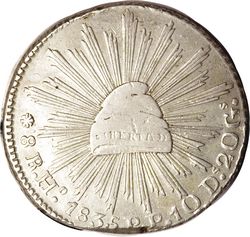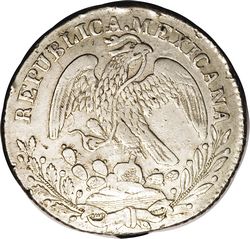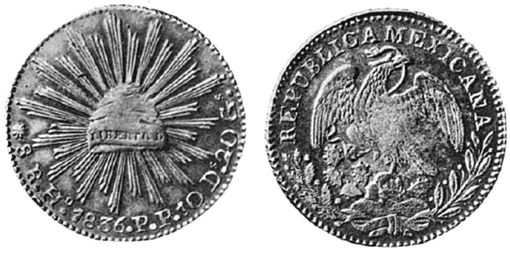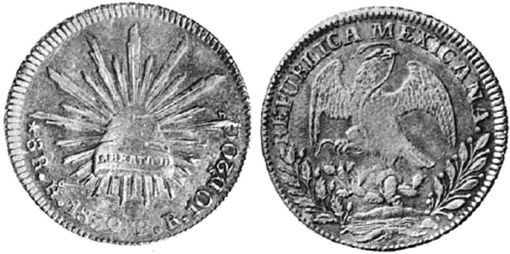“Illegal” 8 reales from Hermosillo
By Pablo Luna Herrerabased on his website eldatonumismatico
On 16 July 1835, the Governor of Sonora, Manuel Escalante y Arvizu, issued a decree authorizing the issue of currency and the corresponding public offering for the lease of a mint in Hermosillo.
Prior to this, in May 1835, Hermosillo had requested matrices from Mexico City (in the understanding that they would be the copper cuartillas that they had been minting), but due to the urgent need for funds and because of the long distances to the capital Hermosillo decided to manufacture its own dies, starting on 1 November 1835. Some sources suggest coinage began on 18 November 1835. Although it was desired to mint gold, so far only silver 8 reales are known, for that couple of years.
On 23 December 1835 the Ministry of Finance condemned the coinage in Hermosillo without its authorization or official dies, asserting that these had been sent to Sonora months before, and ordered the suspension of work and the restricting of circulation of the coins already produced. The government of President Antonio López de Santa Anna quickly ordered the governor of the state, Manuel Escalante y Arvizu, to put an end to the illegal coinage, stating that the state governments had powers over copper coinage, but not silver coinage.
On 25 January 1836 Sonora reported that it had complied with the orders, and added that little currency had been minted because the scales had broken down. Some sources mention 50,000 to 70,000 pieces, with two different dies used for 1835.


KM 377.9 8 reales 1835 Ho PP (Heritage Long Beach auction, 19 September 2008, lot 21741)
 KM 377.9 8 reales 1836 Ho PP
KM 377.9 8 reales 1836 Ho PP
On all these pieces the assayer was Pedro Piembert, PP, the same assayer who was in charge of the official coinage almost thirty years later with the opening of the mint. The few known examples show wear and tear, so these coins did come into circulation.
The coins were withdrawn from circulation, melted down in Hermosillo and others were taken to Mexico City where they suffered the same fate, though some managed to survive. The government removed Eduardo Santoyo from office in 1836 for contempt of authority, employees were fired, and the mint was closed (apparently). On 28 May 1836, a decree was issued[text needed] that held Santoyo responsible for such issues.
Santoyo with his family retired to live in Guaymas, his copper coin continued to circulate throughout the territory until 1859, when negotiations began for the Hermosillo Mint to start operating again, melting down the previous coin to make the new one.
On 28 January 1837, the new governor of Sonora, Rafael Elías, asked Eduardo Santoyo to return to Hermosillo to "revive" the Mint, but Santoyo was too offended to return to minting work.
 KM 377.9 8 reales 1839 Ho PR
KM 377.9 8 reales 1839 Ho PR
In 1839, without Santoyo, a new 8 reales coin was minted, dated in that same year, and with certain changes. For example, the coin has finer details than the previous ones and in the mint mark the "O" is above the "H" and not as before it was on the right.

Dunigan and ParkerMike Dunigan and J. B. Parker, Resplandores, Cap and Rays 8 Reales of the Republic of Mexico 1823-1897, Superior Stamp and Coin, Beverly Hills, 1997 mention that the assayer could be Pablo Rubio, PR, arguing that the change in the mint mark demonstrated a second attempt to obtain authorization for minting silver coin in Hermosillo. This mint mark is the same as the one used in 1864, by the same assayer Pablo Rubio.
A ½ real 1839 is also known.
Finally, the Hermosillo Mint was closed on 29 November 1839.
